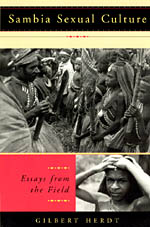Anal sex or anal intercourse is generally the insertion and thrusting of the erect penis into a person's anus, or anus and rectum, for sexual pleasure. Other forms of anal sex include anal fingering, the use of sex toys, anilingus, pegging, as well as electrostimulation and erotic torture such as figging. Although anal sex most commonly means penile–anal penetration, sources sometimes use anal intercourse to exclusively denote penile–anal penetration, and anal sex to denote any form of anal sexual activity, especially between pairings as opposed to anal masturbation.

Human sexual activity, human sexual practice or human sexual behaviour is the manner in which humans experience and express their sexuality. People engage in a variety of sexual acts, ranging from activities done alone to acts with another person in varying patterns of frequency, for a wide variety of reasons. Sexual activity usually results in sexual arousal and physiological changes in the aroused person, some of which are pronounced while others are more subtle. Sexual activity may also include conduct and activities which are intended to arouse the sexual interest of another or enhance the sex life of another, such as strategies to find or attract partners, or personal interactions between individuals. Sexual activity may follow sexual arousal.

Sexual intercourse is sexual activity involving the insertion and thrusting of the male penis inside the female vagina for sexual pleasure, reproduction, or both. This is also known as vaginal intercourse or vaginal sex. Other forms of penetrative sexual intercourse include anal sex, oral sex, fingering and penetration by use of a dildo, and vibrators These activities involve physical intimacy between two or more individuals and are usually used among humans solely for physical or emotional pleasure and can contribute to human bonding.

Sexual orientation is an enduring personal pattern of romantic attraction or sexual attraction to persons of the opposite sex or gender, the same sex or gender, or to both sexes or more than one gender. Patterns are generally categorized under heterosexuality, homosexuality, and bisexuality, while asexuality is sometimes identified as the fourth category.

The sexual revolution, also known as the sexual liberation, was a social movement that challenged traditional codes of behavior related to sexuality and interpersonal relationships throughout the developed Western world from the 1960s to the 1970s. Sexual liberation included increased acceptance of sex outside of traditional heterosexual, monogamous relationships. The normalization of contraception and the pill, public nudity, pornography, premarital sex, homosexuality, masturbation, alternative forms of sexuality, and the legalization of abortion all followed.

The views of the various different religions and religious believers regarding human sexuality range widely among and within them, from giving sex and sexuality a rather negative connotation to believing that sex is the highest expression of the divine. Some religions distinguish between human sexual activities that are practised for biological reproduction and those practised only for sexual pleasure in evaluating relative morality.
The Masters and Johnson research team, composed of William H. Masters and Virginia E. Johnson, pioneered research into the nature of human sexual response and the diagnosis and treatment of sexual disorders and dysfunctions from 1957 until the 1990s.

Intercrural sex, which is also known as coitus interfemoris, thigh sex, thighing, thighjob and interfemoral sex, is a type of non-penetrative sex in which the penis is placed between the receiving partner's thighs and friction is generated via thrusting. It was a common practice in ancient Greek society prior to the early centuries AD, and was frequently discussed by writers and portrayed in artwork such as vases. It later became subject to sodomy laws and became increasingly seen as contemptible. In the 17th century, intercrural sex was featured in several works of literature and it took cultural prominence, being seen as a part of male-on-male sexual habits following the trial and execution of Mervyn Tuchet, 2nd Earl of Castlehaven, in 1631.
The social construction of human sexuality and sexual behavior—along with its taboos, regulation, and social and political impact—has had a profound effect on the various cultures of the world since prehistoric times.
Human male sexuality encompasses a wide variety of feelings and behaviors. Men's feelings of attraction may be caused by various physical and social traits of their potential partner. Men's sexual behavior can be affected by many factors, including evolved predispositions, individual personality, upbringing, and culture. While most men are heterosexual, there are minorities of homosexual or varying degrees of bisexual men.
Adolescent sexuality is a stage of human development in which adolescents experience and explore sexual feelings. Interest in sexuality intensifies during the onset of puberty, and sexuality is often a vital aspect of teenagers' lives. Sexual interest may be expressed in a number of ways, such as flirting, kissing, masturbation, or having sex with a partner. Sexual interest among adolescents, as among adults, can vary greatly, and is influenced by cultural norms and mores, sex education, as well as comprehensive sexuality education provided, sexual orientation, and social controls such as age-of-consent laws.
Human sexuality is the way people experience and express themselves sexually. This involves biological, psychological, physical, erotic, emotional, social, or spiritual feelings and behaviors. Because it is a broad term, which has varied with historical contexts over time, it lacks a precise definition. The biological and physical aspects of sexuality largely concern the human reproductive functions, including the human sexual response cycle.
Clellan Stearns Ford was an American anthropologist, best known as Professor of Anthropology at Yale University, and as co-author of the 1951 book Patterns of Sexual Behavior.
Frank Ambrose Beach, Jr. was an American ethologist, best known as co-author of the 1951 book Patterns of Sexual Behavior. He is often regarded as the founder of behavioral endocrinology, as his publications marked the beginnings of the field.

The Evolution of Human Sexuality is a 1979 book about human sexuality by the anthropologist Donald Symons, in which the author discusses topics such as human sexual anatomy, ovulation, orgasm, homosexuality, sexual promiscuity, and rape, attempting to show how evolutionary concepts can be applied to humans. Symons argues that the female orgasm is not an adaptive trait and that women have the capacity for it only because orgasm is adaptive for men, and that differences between the sexual behavior of male and female homosexuals help to show underlying differences between male and female sexuality. In his view, homosexual men tend to be sexually promiscuous because of the tendency of men in general to desire sex with a large number of partners, a tendency that in heterosexual men is usually restrained by women's typical lack of interest in promiscuous sex. Symons also argues that rape can be explained in evolutionary terms and feminist claims that it is not sexually motivated are incorrect.
An uterine orgasm, or womb orgasm, is an orgasm of the uterus, usually by stimulation of an area just outside the cervix, or the cervix itself, or the vaginal wall adjacent to the uterus. Uterine orgasms can also occur without stimulation. There is some anecdotal evidence to suggest that this is a type of sexual climax.

The Sexual Brain is a 1993 book about brain mechanisms involved in sexual behavior and feelings, and related topics such as sexual orientation, by the neuroscientist Simon LeVay. The book was praised as a well-written work on science. However, some reviewers pointed out factual errors, and noted that LeVay failed to prove that homosexuality has a biological basis.

Sexuality and Its Discontents: Meanings, Myths, and Modern Sexualities is a 1985 book about the politics and philosophy of sex by the sociologist Jeffrey Weeks. The book received positive reviews, crediting Weeks with explaining the theories of sexologists and usefully discussing controversial sexual issues. However, Weeks was criticised for his treatment of feminism and sado-masochism.

Sex and Reason is a 1992 book about human sexuality by the economist and federal judge Richard Posner, in which the author attempts to explain sexual behavior in economic terms and discusses a range of controversial subjects related to sex, proposing reforms in American laws.

Sambia Sexual Culture: Essays from the Field is a 1999 book about the Simbari people and their sexual practices by the anthropologist Gilbert Herdt. The book received negative reviews, accusing Herdt of being biased in his approach and his conclusions. In the book the Simbari people are called Sambia people











